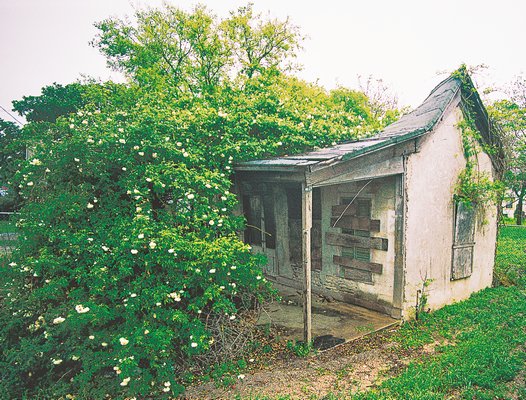
To Michael Shoup, founder and owner of The Antique Rose Emporium in Brenham, Texas, roses are empresses in the garden, each with its own distinct personality. Mr. Shoup’s 30 years of growing old roses have given him plenty of time to figure out their characteristics and quirks.
On the East End last month to deliver the keynote address at the Southampton Rose Society’s annual business meeting and luncheon at the Meadow Club, Mr. Shoup shared with a receptive audience his history with roses and outlined his innovative approach to understanding them. The truth: he didn’t always like roses. Like many gardeners, he dismissed them as fussy plants that have to be sprayed and pruned and pampered.
When he graduated from Texas A&M in 1976, he opened a landscape business. He sold privet, photinia and other standard landscape plants. He did not sell roses.
In the early 1980s, Mr. Shoup started hunting for native plants as low-maintenance alternatives to the boring conventional shrubs he’d been selling. What he found, to his surprise, was roses. Yes, roses—those fussy, demanding prima donnas of the garden world.
Except the roses he was finding were growing in places where they got no help from humans. They flourished untended in old cemeteries, in abandoned homesteads, in dilapidated neighborhoods where families have shared plants and grown a favorite rose passed along for generations.
“Cemeteries,” said Mr. Shoup, “were fruitful hunting grounds for these time-tested plants. You don’t find the weaklings.”
It’s the toughest, most adaptable plants that survive and thrive with total neglect, he said. So, he took cuttings (with permission, when he could find the landowners) and planted them.
Those early rose cuttings grew into plants, and bloomed, and Mr. Shoup gradually built a nursery full of roses that could survive the harshest conditions and still flower lavishly. Today his Antique Rose Emporium is a go-to source for adaptable, low-maintenance roses with glorious, deliciously fragrant flowers in a host of warm colors.
As he got to know them better, Mr. Shoup realized that these tough old roses belonged in gardens and landscapes with other plants. And over the years, he realized that old roses have two primary distinguishing characteristics—besides their toughness—which make them integral in the garden.
One is their complex and intoxicating fragrance, which speaks directly to the emotions, conjuring up memories and providing the smeller with links to past experiences and deeper feelings.
“If a flower’s not fragrant,” said Mr. Shoup, “you might as well be looking at a picture in a book.”
The second great quality he has found in old roses is their diversity of form, which makes it possible to use them in many different ways in the garden. They can climb an arch, drip from an arbor or sprawl over a fence. They can mix comfortably into a perennial border or foundation planting.
Use old roses, he urged, as brush strokes in the landscape. They can be to the gardener as paints to a painter.
Unlike overbred hybrid tea roses, old garden roses never lose their charm or durability. They’re disease-resistant and easy to grow.
“They are the ultimate garden plants,” declared Mr. Shoup.
According to Mr. Shoup, the more he grew old roses, the more he began to discern their individual qualities.
“I felt they were trying to tell me something,” he said.
So he listened, and about four years ago, the characteristics of his different roses began to resolve themselves into personalities, he reported.
Understanding each rose’s persona enables him to find the perfect way to use it to best effect in the garden. Modern hybrids don’t have these personalities, he said, since they are bred for show, for the perfection of flower form. They’re not meant to mingle with other plants in gardens and landscapes.
In his gorgeous, fascinating book, “Empress of the Garden,” Mr. Shoup organized the roses he grows and sells into groups based on their personalities and their design qualities. He also and offers different ways to use each one in the landscape.
The Dreamy Romantics, for example, are climbers of the Noisette class, his personal favorite group of roses, ideal for southern gardens. Their weak-stemmed, intensely fragrant flowers are perfect to dangle from an overhead arbor or entryway, or fanned out on a trellis or fence.
The Queen Mothers are shrubs, particularly tea roses (not today’s hybrid teas but their precursors). Their full, perfect flowers have a soft look. This group deserves a front-and-center place in a foundation planting or hedgerow.
Being drawn into the world of old roses, explained Mr. Shoup, is like having a relationship with another person: the better you get to know them, the more there is to discover.
Really understanding how to use these roses in the garden comes from the gardener’s relationship to the rose, not just to the flower itself. Fortunately for him, and for rose lovers everywhere, Michael Shoup is still discovering roses.